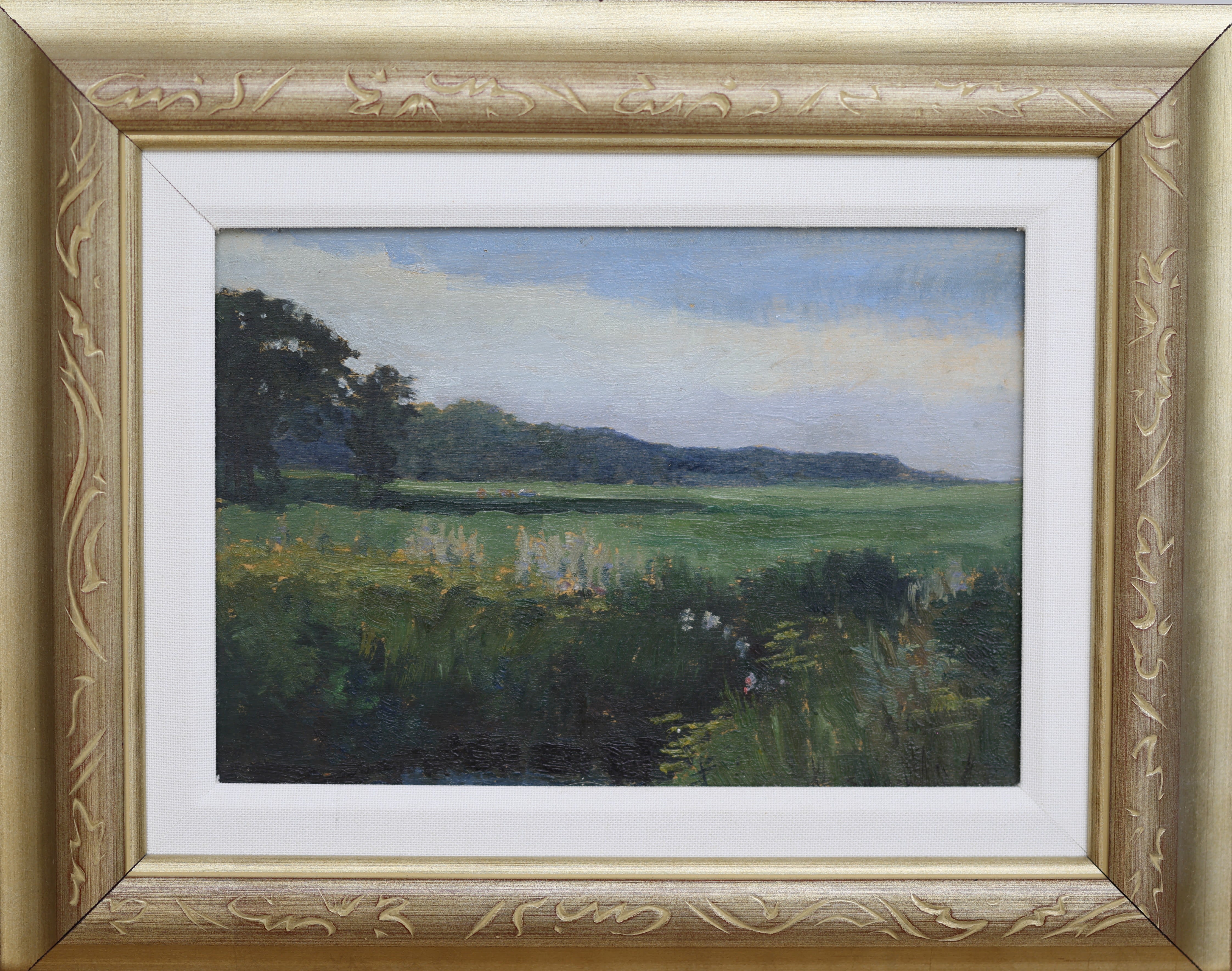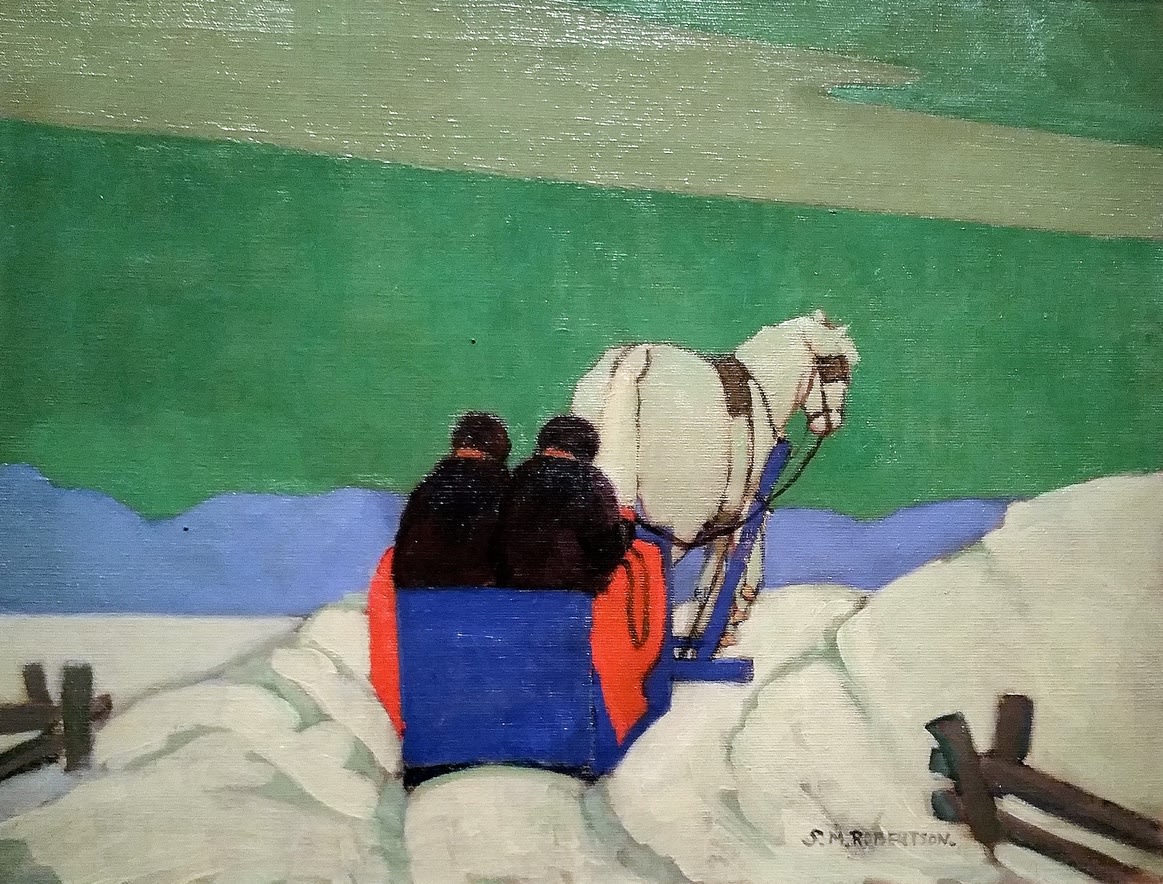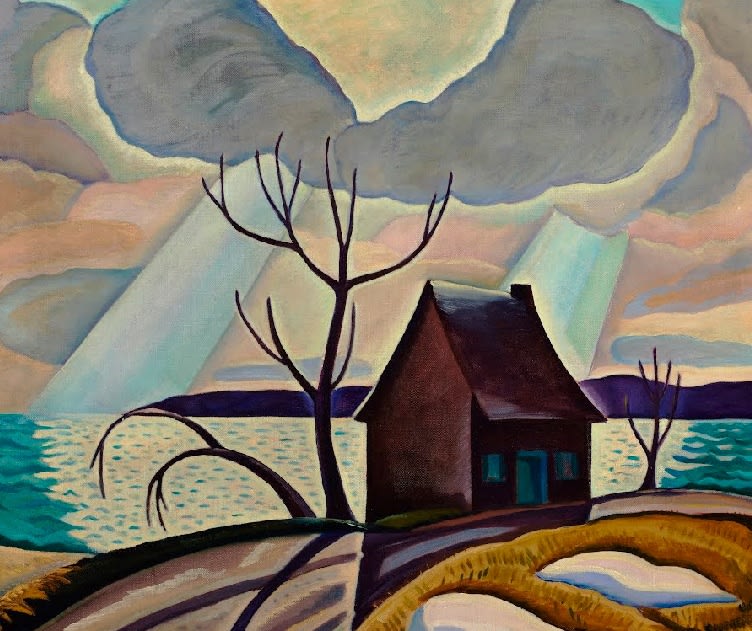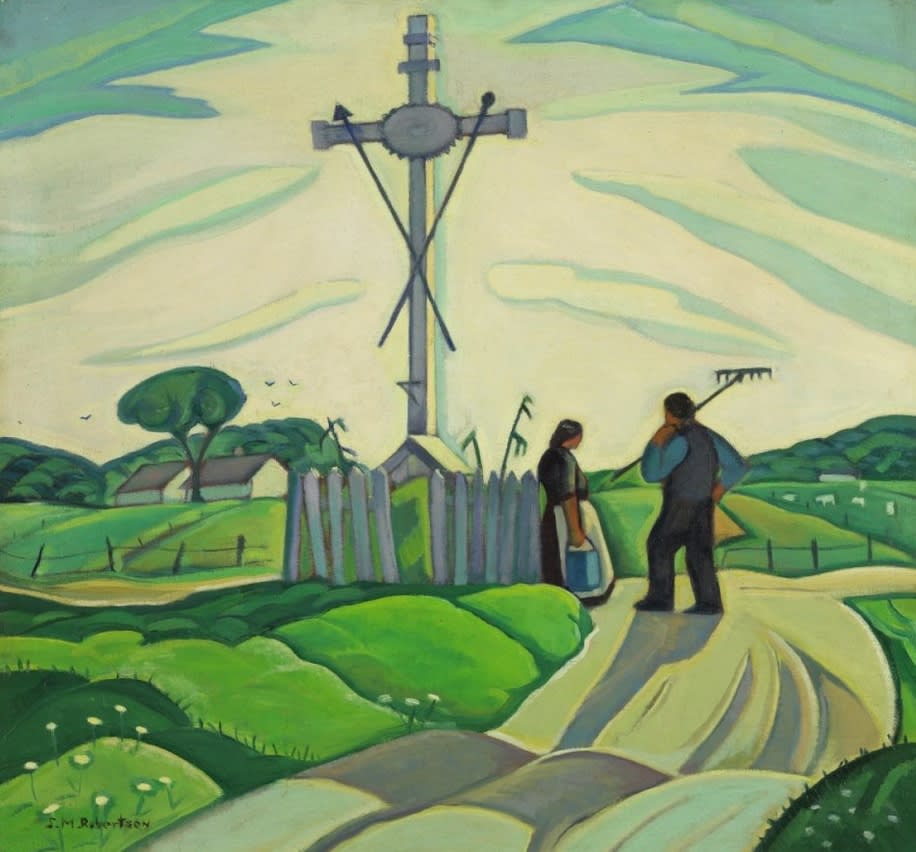Sarah Margaret Armour Robertson (June 16, 1891–December 6, 1948) was a trailblazing Canadian artist who overcame immense personal and professional challenges to leave an indelible mark on the art world. Born in Montreal, Sarah was the eldest child of John Armour Robertson and Jessie Ann Christie. Despite an initially comfortable upbringing, her family faced financial struggles, and personal tragedies—including the loss of her brother, Louis, in World War I.

Sarah Robertson; Montreal West, c 1915
Sarah’s artistic education began at age 17 when she enrolled at the Art Association of Montreal (AAM). There, under the tutelage of renowned instructors like William Brymner and Maurice Cullen, she honed her skills and developed a deep love for painting. Brymner instilled in her a sense of the "terrific importance" of art, while Cullen’s outdoor sketching trips inspired Sarah’s passion for landscapes.
In 1920, Sarah became associated with the Beaver Hall Group, a collective of Montreal artists dedicated to individual expression in art. Unlike the Group of Seven, the Beaver Hall Group embraced women artists, fostering a spirit of collaboration and support. Sarah formed close friendships with prominent artists like Anne Savage, Prudence Heward, and Lilias Torrance Newton, becoming a central figure in this network.

Sarah Robertson; Le traîneau bleu; 1924
Sarah’s work, characterised by its humane vision and vibrant colour palettes, often depicted the inhabited landscapes of Quebec’s Eastern Townships. Her paintings, such as Joseph and Marie Louise (1930) and On Lake St. Louis (c. 1933), reflect her ability to balance bold colours with emotional depth. She also explored portraits, still-life compositions, and urban scenes, drawing inspiration from her daily surroundings.
Despite her talent, Sarah faced significant challenges as a female artist in a male-dominated field. The influence of the Group of Seven’s rugged landscapes created a standard that conflicted with her more intimate style. Additionally, her personal life was marked by poverty, a domineering mother, and ill health, including cancer that limited her ability to paint outdoors.

Sarah Robertson; On Lake St. Louis, c 1933
Sarah's dedication to her craft never wavered. Her letters to fellow artist A.Y. Jackson reveal her self-doubt but also her resilience and humour. Jackson, who greatly admired her work, frequently sought her critical eye for his own selections. Sarah’s legacy extended beyond her paintings; she was a mentor and advocate for her peers, promoting their work and fostering a sense of community among Montreal’s artists.
Though overshadowed by Abstract Expressionism in the 1950s, Sarah’s contributions were rediscovered in exhibitions like the 1966 Beaver Hall Hill Group show at the National Gallery of Canada. Her 1951 Memorial Exhibition at the same gallery showcased her artistic range and solidified her place in Canadian art history.

Sarah Robertson; Joseph and Marie-Louise
Sarah Robertson’s legacy is a testament to her indomitable spirit, immense talent, and dedication to art. Her vibrant landscapes and evocative compositions continue to inspire new generations, affirming her status as one of Canada’s most remarkable artists.


